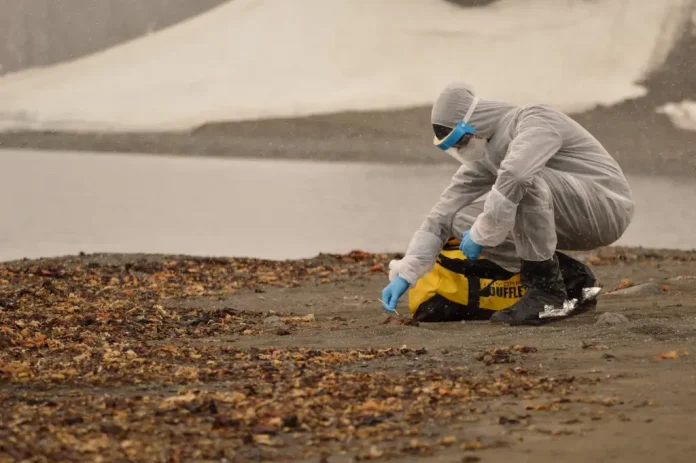Gaps in work on a new bird flu could have dire consequences in the fight against the looming pandemic, scientists told Reuters.
Many have been tracking a new subtype of H5N1 bird flu among migratory birds since 2020. But the spread of the virus to 129 dairy flocks in 12 US states, opens a new tab, signalling changes that could bring it closer to becoming transmissible between humans. Infections have also been found in other mammals, from alpacas to domestic cats. Scott Hensley, a professor of microbiology at the University of Pennsylvania, said:
It almost seems like a pandemic unfolding in slow motion. Right now, the threat is pretty low … but that could change in a heartbeat.
The sooner there is warning of the virus crossing into humans, the sooner global health officials can take action to protect humans by initiating vaccine development, large-scale testing and containment measures.
Federal surveillance of US dairy cows is currently limited to inspecting herds before they cross state lines. State inspections are inconsistent, and checks on people exposed to sick cattle are sparse, government officials and pandemic flu experts told Reuters. Dutch flu virologist Ron Fouchier of the Erasmus Medical Center in Rotterdam said:
You need to know which are the positive farms, how many of the cows are positive, how well the virus spreads, how long do these cows remain infectious, the exact transmission route.
Dr. Jeanne Marrazzo, director of the US National Institute of Allergy and Infectious Diseases, says human surveillance is “very, very limited.”
Marrazzo described the US Centers for Disease Control and Prevention’s human influenza surveillance network as “really a passive reporting, passive presentation mechanism.” The US Department of Agriculture is more proactive in checking cows, she said, but does not release information about which farms are affected.
Several experts said the different approaches of animal and human health agencies could hinder a faster response. Gigi Gronvall, a biosecurity expert at the Johns Hopkins Center for Health Security, said:
If you were designing the system from scratch, you would have one agency. This is not the only example where we have environmental or animal problems that cause human problems.
A USDA spokesperson said the agency is working “around the clock” with the CDC and other partners as part of a “whole-of-government response,” adding that current research shows, “America’s food supply remains safe, sick cows typically recover in a few weeks, and the risk to human health remains low.”
The CDC said in a statement that “the US Department of Agriculture and state and local health departments across the country have been preparing for a new influenza virus for nearly 2 decades and are constantly monitoring even the smallest changes in the virus.”
